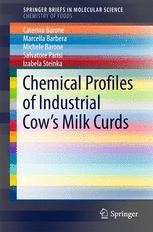

Most ebook files are in PDF format, so you can easily read them using various software such as Foxit Reader or directly on the Google Chrome browser.
Some ebook files are released by publishers in other formats such as .awz, .mobi, .epub, .fb2, etc. You may need to install specific software to read these formats on mobile/PC, such as Calibre.
Please read the tutorial at this link: https://ebookbell.com/faq
We offer FREE conversion to the popular formats you request; however, this may take some time. Therefore, right after payment, please email us, and we will try to provide the service as quickly as possible.
For some exceptional file formats or broken links (if any), please refrain from opening any disputes. Instead, email us first, and we will try to assist within a maximum of 6 hours.
EbookBell Team

4.0
36 reviewsThis Brief explores the chemistry and production technology of a cheese precursor: the cow’s milk curd. It explains how different coagulation and treatment methods can be used to obtain various types of cheeses. Parameters such as the type of used milk, the coagulation method, pH value, color, and microbial fermentation have a profound impact on the resulting curd properties, and hence on the cheese.
The authors discuss some of the most important parameters, and how their modification can lead to a variety of cheese and dairy products. This Brief also addresses the question, if cheese makers can standardize their production procedures, and what role chemistry may play in that. Another important point addressed here are the sources of failures in the curd production, e.g. in packaging systems.
Readers will find selected examples of helpful analytical techniques for studying and evaluating curd quality, and for monitoring the chemical evolution of selected chemical substances or protein aggregation.